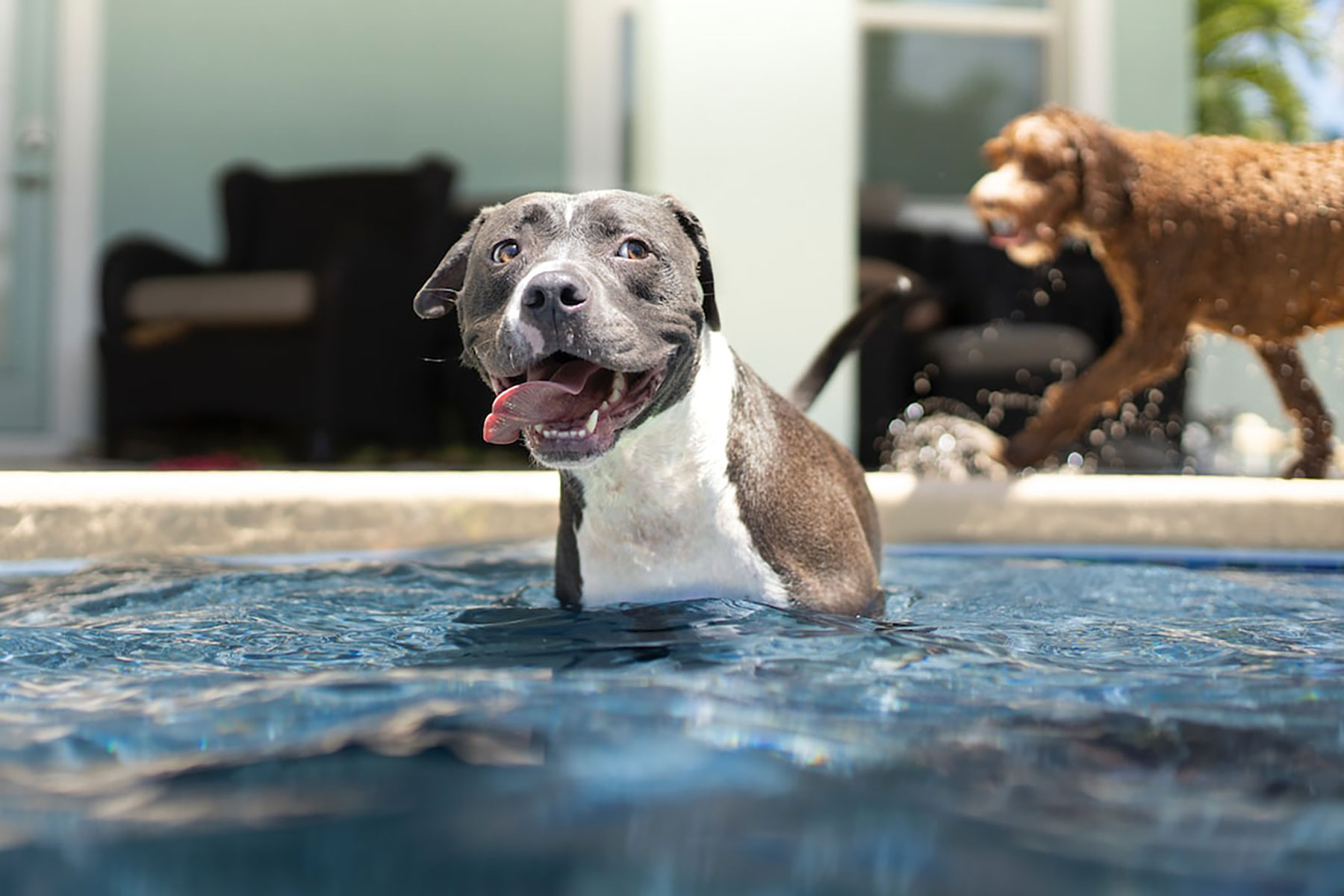With summer temperatures rising, pet owners must protect their furry friends from the heat. Heat, humidity, and long hours of sunlight can be dangerous for pets who spend a lot of time outdoors. Even indoor pets can face risks from the weather if summer storms cause power outages.
Pet owners can keep their companions safe by protecting pets from heat, knowing the signs of heat stroke, and planning accordingly for the summer months.
Overheating and Heat Stroke
Dogs and cats are susceptible to ill effects from being too hot. Their fur-covered bodies and limited ability to sweat can cause their temperatures to rise quickly, which is dangerous to their overall health. Old, young, or overweight animals are at greater risk for overheating. Breeds with flattened faces, like pugs, boxers, and Persian cats, can have difficulty breathing in hot weather.
Pet owners should be alert to signs of overheating and heat stroke, such as:
- Difficulty breathing
- Heavy panting
- Excessive salivation
- Glazed eyes
- Rapid heartbeat
- Excessive thirst
- Lethargy
- Fever
- Dizziness or lack of coordination,
- Vomiting
- Deep red or purple tongue
- Seizure
- Unconsciousness
Never Leave Pets in Cars
Leaving a pet in a car on a hot day can quickly lead to fatal heat stroke. The Humane Society warns that on an 85-degree day, the temperature inside a car can reach 102 degrees within 10 minutes, even with windows slightly open. The temperature will climb to 120 degrees within 30 minutes. A pet left in a hot car can suffer irreversible organ damage and die.
Treating Heat Stroke
If your pet shows signs of heat stroke or overheating, immediately move them to an air-conditioned space until you can get them to the veterinarian. Use cool compresses on their chest, neck, and head. You can also run cool, but not cold, water over them. Allow your pet to drink small amounts of water or lick ice cubes.
Call your vet as soon as possible. You may need to bring your pet into the office for further treatment, such as IV fluids or oxygen.
Preventing Heat Stroke
The best approach to heat stroke is preventing it. Pet owners should pay attention to the weather forecast and monitor temperature and humidity. On hot, humid days, pet owners should take safety precautions such as:
- Limit exercise: Vigorous exercise in the heat can lead to overheating. Plan shorter walks or limited time playing outdoors on hot or humid days. Schedule walks for early in the morning or in the evening when temperatures are lower. Keep your pet on grass as much as possible to avoid the risk of paw injury from hot roads and sidewalks. Carry water and offer it to your pet during any exercise.
- Provide shade and water: If you let your pet out in the yard, ensure they have access to shade and water. Shade from a tree or pop-up canopy is ideal because that allows a breeze to cool your pet. Dog houses or other enclosed shelters don’t allow airflow and may be too hot. Put out fresh water and refill it regularly. You can add ice cubes to keep the water cool.
- Try cooling wraps and mats: Pet owners can choose from a wide variety of cooling beds, mats, and wraps. These fabric items absorb cool water but have a dry outer layer. The mats or wraps stay cool without making your pet damp.
- Plan for emergencies: Have a plan in place for extended power outages during hot weather. Keep plenty of bottled water on hand for hydration and cooling. Room darkening curtains or shade can reduce the heating effects of the sun. Make a list of pet-friendly cooling centers or hotels you can visit if necessary.
Visit Live Oak Animal Hospital to Get Your Pets Ready for Summer
Our award-winning Live Oak Animal Hospital veterinary team has decades of combined experience treating pets for heat-related issues and other health problems. We are proud to be a locally-owned business and treat all of our clients and their pets like family members. If you have questions about keeping your pet healthy in hot weather, contact us today for trusted care you can rely on.





